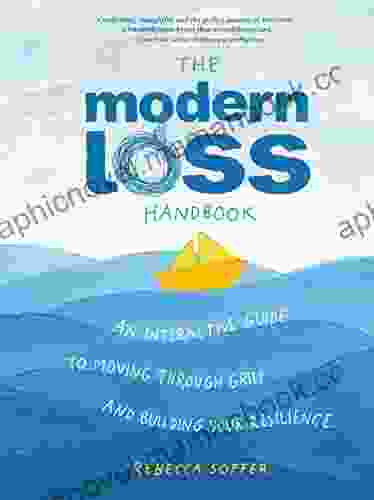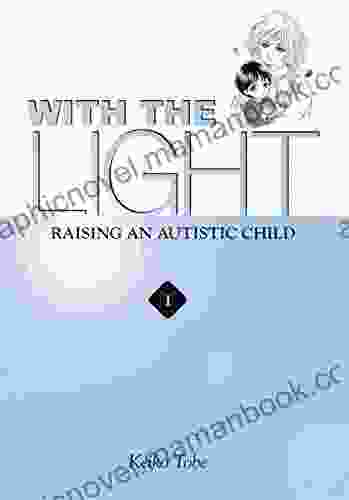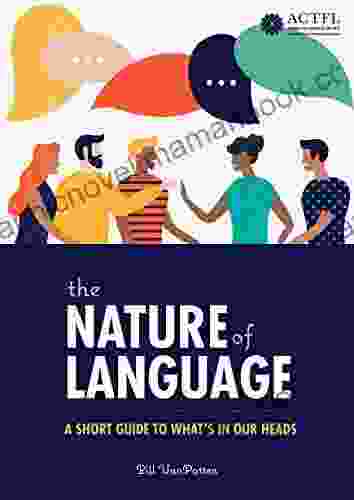A Comprehensive Guide to What's Going on Inside Our Heads

The human mind is a vast and complex organ that has intrigued scientists and philosophers for centuries. In recent decades, advances in neuroscience have provided us with an unprecedented understanding of how the mind works. This article will provide a comprehensive guide to the human mind, exploring its complexities, functions, and the latest scientific discoveries in neuroscience.
The human brain is a highly complex organ, consisting of billions of neurons that communicate with each other through trillions of connections. The brain can be divided into two hemispheres, the left and right hemispheres, which are connected by a thick band of nerve fibers called the corpus callosum.
Each hemisphere is responsible for different functions. The left hemisphere is primarily responsible for language, logic, and analytical thinking, while the right hemisphere is primarily responsible for spatial reasoning, creativity, and emotions.
5 out of 5
| Language | : | English |
| File size | : | 1671 KB |
| Text-to-Speech | : | Enabled |
| Enhanced typesetting | : | Enabled |
| Word Wise | : | Enabled |
| Print length | : | 128 pages |
| Screen Reader | : | Supported |
The brain is also divided into four main lobes: the frontal lobe, the parietal lobe, the temporal lobe, and the occipital lobe. Each lobe is responsible for different functions, such as motor control, sensory processing, and memory.
Neurotransmitters are chemical messengers that allow neurons to communicate with each other. There are many different neurotransmitters, each of which has a specific function.
Some of the most important neurotransmitters include:
- Glutamate: The most common neurotransmitter in the brain, glutamate is involved in learning and memory.
- GABA: GABA is an inhibitory neurotransmitter that helps to calm the brain and reduce anxiety.
- Dopamine: Dopamine is a neurotransmitter that is involved in reward and motivation.
- Serotonin: Serotonin is a neurotransmitter that is involved in mood and sleep.
- Norepinephrine: Norepinephrine is a neurotransmitter that is involved in arousal and attention.
Memory is the ability to store and retrieve information. The brain stores memories in a variety of ways, including:
- Short-term memory: Short-term memory stores information for a few seconds or minutes.
- Long-term memory: Long-term memory stores information for days, weeks, or even years.
- Episodic memory: Episodic memory stores memories of specific events.
- Semantic memory: Semantic memory stores memories of facts and knowledge.
The hippocampus is a brain structure that is essential for memory formation. The hippocampus helps to encode new memories and store them in long-term memory.
Emotions are complex mental states that are often accompanied by physical changes, such as changes in heart rate, breathing, and muscle tension. The amygdala is a brain structure that is essential for processing emotions. The amygdala helps to identify emotional stimuli and trigger appropriate responses.
Consciousness is the state of being aware of oneself and one's surroundings. The brain structures that are involved in consciousness include the cerebral cortex, the thalamus, and the brainstem.
The cerebral cortex is the outermost layer of the brain and is responsible for higher-order functions, such as thinking, language, and planning. The thalamus is a brain structure that relays sensory information to the cerebral cortex. The brainstem is a brain structure that controls basic functions, such as breathing and heart rate.
Mental disorders are conditions that affect the mind and behavior. Mental disorders can range from mild to severe and can have a significant impact on a person's life.
Some of the most common mental disorders include:
- Anxiety disorders: Anxiety disorders are characterized by excessive fear and anxiety.
- Mood disorders: Mood disorders are characterized by changes in mood, such as depression and bipolar disorder.
- Psychotic disorders: Psychotic disorders are characterized by a loss of contact with reality, such as schizophrenia.
Mental disorders can be treated with a variety of methods, including therapy, medication, and lifestyle changes.
The human mind is a vast and complex organ that is responsible for everything from our thoughts and feelings to our actions and behaviors. In recent decades, advances in neuroscience have provided us with an unprecedented understanding of how the mind works. This article has provided a comprehensive guide to the human mind, exploring its complexities, functions, and the latest scientific discoveries in neuroscience.
5 out of 5
| Language | : | English |
| File size | : | 1671 KB |
| Text-to-Speech | : | Enabled |
| Enhanced typesetting | : | Enabled |
| Word Wise | : | Enabled |
| Print length | : | 128 pages |
| Screen Reader | : | Supported |
Do you want to contribute by writing guest posts on this blog?
Please contact us and send us a resume of previous articles that you have written.
 Top Book
Top Book Novel
Novel Fiction
Fiction Nonfiction
Nonfiction Literature
Literature Paperback
Paperback Hardcover
Hardcover E-book
E-book Audiobook
Audiobook Bestseller
Bestseller Classic
Classic Mystery
Mystery Thriller
Thriller Romance
Romance Fantasy
Fantasy Science Fiction
Science Fiction Biography
Biography Memoir
Memoir Autobiography
Autobiography Poetry
Poetry Drama
Drama Historical Fiction
Historical Fiction Self-help
Self-help Young Adult
Young Adult Childrens Books
Childrens Books Graphic Novel
Graphic Novel Anthology
Anthology Series
Series Encyclopedia
Encyclopedia Reference
Reference Guidebook
Guidebook Textbook
Textbook Workbook
Workbook Journal
Journal Diary
Diary Manuscript
Manuscript Folio
Folio Pulp Fiction
Pulp Fiction Short Stories
Short Stories Fairy Tales
Fairy Tales Fables
Fables Mythology
Mythology Philosophy
Philosophy Religion
Religion Spirituality
Spirituality Essays
Essays Critique
Critique Commentary
Commentary Glossary
Glossary Bibliography
Bibliography Index
Index Table of Contents
Table of Contents Preface
Preface Introduction
Introduction Foreword
Foreword Afterword
Afterword Appendices
Appendices Annotations
Annotations Footnotes
Footnotes Epilogue
Epilogue Prologue
Prologue James Alexander Thom
James Alexander Thom Ray Dalio
Ray Dalio Katie Wismer
Katie Wismer Michael Ball
Michael Ball John Mccallum
John Mccallum Boyd Craven Iii
Boyd Craven Iii Maclen Stanley
Maclen Stanley Philip Richardson
Philip Richardson Karen Glass
Karen Glass Melanie Shawn
Melanie Shawn Ayushee Roy
Ayushee Roy Pam Howes
Pam Howes John Mongan
John Mongan Beverley Courtney
Beverley Courtney Hayan Charara
Hayan Charara Michael D Orazio
Michael D Orazio Hollie De Cruz
Hollie De Cruz Andrew Davis
Andrew Davis P J O Rourke
P J O Rourke Laurence Leamer
Laurence Leamer
Light bulbAdvertise smarter! Our strategic ad space ensures maximum exposure. Reserve your spot today!

 Ernest HemingwayThe Modern Loss Handbook: An In-Depth Exploration of Grief in the 21st...
Ernest HemingwayThe Modern Loss Handbook: An In-Depth Exploration of Grief in the 21st...
 Isaac AsimovTimeless Secrets Of Permanent Weight Loss And Rejuvenation Masters Strength...
Isaac AsimovTimeless Secrets Of Permanent Weight Loss And Rejuvenation Masters Strength... Arthur Conan DoyleFollow ·17.2k
Arthur Conan DoyleFollow ·17.2k William FaulknerFollow ·18.6k
William FaulknerFollow ·18.6k Oscar WildeFollow ·16.7k
Oscar WildeFollow ·16.7k Trevor BellFollow ·3.1k
Trevor BellFollow ·3.1k Roberto BolañoFollow ·6.8k
Roberto BolañoFollow ·6.8k Henry HayesFollow ·12.8k
Henry HayesFollow ·12.8k Mario Vargas LlosaFollow ·10.6k
Mario Vargas LlosaFollow ·10.6k Mikhail BulgakovFollow ·15.6k
Mikhail BulgakovFollow ·15.6k

 Rex Hayes
Rex HayesWorld of Dead Volume Issue: An In-Depth Analysis
The World of Dead volume issue...

 Nathan Reed
Nathan ReedHard Lessons Learned from ERP Rollouts: A Hivemind...
Enterprise...

 Fernando Bell
Fernando BellWith the Light, Vol. 1: Illuminating the Extraordinary...
The advent of parenthood is a...

 Wesley Reed
Wesley ReedNo Helping Hand: True Story of Deadly Waves
In December 2004,...

 Ruben Cox
Ruben CoxIntroduction to Electrodynamics by David Griffiths: A...
to Electrodynamics by...
5 out of 5
| Language | : | English |
| File size | : | 1671 KB |
| Text-to-Speech | : | Enabled |
| Enhanced typesetting | : | Enabled |
| Word Wise | : | Enabled |
| Print length | : | 128 pages |
| Screen Reader | : | Supported |










